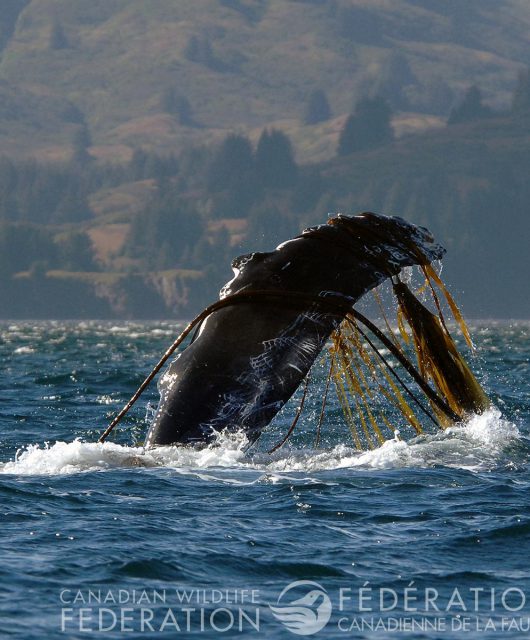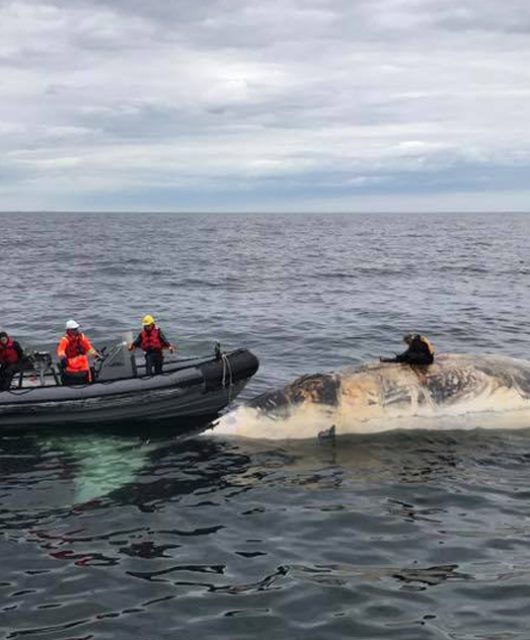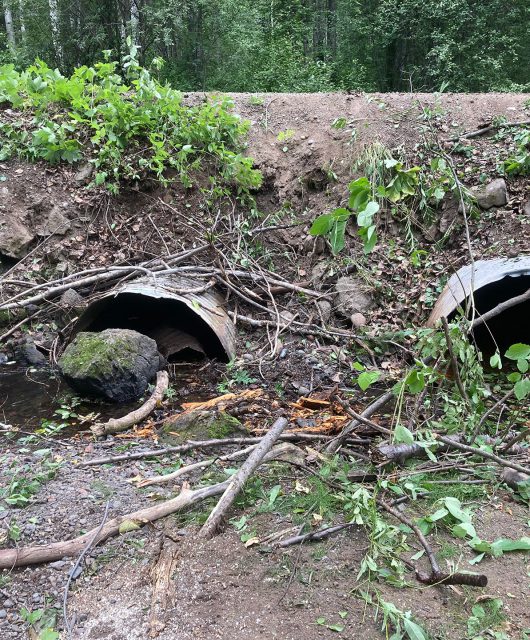This article was extracted from Say Magazine, Issue 110, with permission.
A four-year collaborative project led by the Canadian Wildlife Federation (CWF) has explored what is happening to salmon migrating through Traditional Lands of the upper Yukon River.
Centuries ago, thousands of Yukon River Chinook salmon were being harvested by the Indigenous Peoples in the area we now refer to as Whitehorse. Now, just a few hundred salmon make the long 3,000 km migration to Whitehorse each year, and nearly all Indigenous Peoples in the surrounding area have stopped harvesting salmon to help recover the once prolific stock.
“We need to keep respect for salmon in the forefront and work together to ensure the best possible future for this species,” said Brandy Mayes, lands operations manager of Kwanlin Dün First Nation (KDFN). She, like many others, feels a sense of responsibility to the salmon.

Salmon migrations are remarkably unique within the animal kingdom. Salmon are born in freshwater streams, swim to the ocean, then migrate back to their birth site to spawn.
“We hear that the waters used to run red with fish, and now they hardly run at all. Salmon have been important to our culture for thousands of years, and it’s important to make sure the stock stays healthy for thousands of years to come,” said Cheyenne Bradley, steward officer with KDFN.
If the salmon cannot make it back to their intended spawning site, they often fail to reproduce or contribute to the next generation of salmon. The loss of salmon from a river can have devastating impacts on the ecosystem, not to mention local communities that have a strong cultural connection with the resource. Today, salmon populations are in decline, in large part because salmon are challenged more than ever during their migrations.
In 2016, Lloyd Lintott (past president of CWF) and Tami Grantham (biologist with the Carcross/Tagish First Nation; CTFN) connected CWF and CTFN to identify mutual Chinook salmon research interests to understand these threats. Various local organizations, including Carcross/Tagish First Nation, Ta’an Kwäch’än Council, Kwanlin Dün First Nation, Fisheries and Oceans Canada, Yukon Fish and Game Association, and Yukon Energy Corporation, together identified key research questions, including where are salmon going after passing the hydro plant and how effective is the Whitehorse Rapids Fishladder? The Whitehorse Hydro Plant was built in 1958 and would be a complete barrier to salmon movement if it wasn’t for the Whitehorse Rapids Fishladder, a wooden passageway that allows salmon to swim around the dam and make it to spawning habitat upstream. Answering these questions could help inform recovery actions and strategies for the local population.
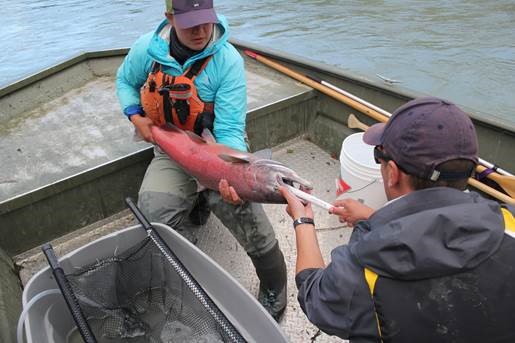
Over the next four years, the CWF and CTFN worked with various partner organizations to monitor Chinook salmon movement through the Traditional Territories of the four local First Nations, Carcross/Tagish First Nation, Kwanlin Dün First Nation, Ta’an Kwach’an Council, and Champagne and Aishihik First Nations. To understand where salmon were moving throughout the river, the project team needed to first capture and tag salmon with tracking transmitters. This meant spending long days on the Yukon River, patiently waiting for salmon to be captured in their nets. Over the course of four years, about 550 hours of netting was completed. In total, over 40 people from several different organizations spent time in the field, most of which were from one of the four local First Nations.
This time on the water was an opportunity to learn from one another about salmon, science, conservation, culture and environmental stewardship. For example, Karlie Knight, the previous natural resource coordinator at CTFN, spoke to an Elder about the project, who said, “If you take measurements from a salmon after death, be sure to return it back to the river with its head upstream so its spirit can return home.” Similarly, project volunteers learned about fish biology, scientific sampling and conservation.
Danny Cresswell of CTFN explained what it means to be involved with salmon projects on the land. “To be involved with this kind of project, to help the salmon, is not only an honour but it’s our responsibility to do whatever we can to help the salmon reach their spawning grounds. Every single salmon makes a difference. The salmon have been making this long journey to spawn and feed the people all the way along the river for thousands of years. Now governments, industries, non-governmental organizations and concerned people everywhere need to work together to help preserve this valuable and irreplaceable resource that both benefits us and the entire ecosystem. Together today for our fish tomorrow.”
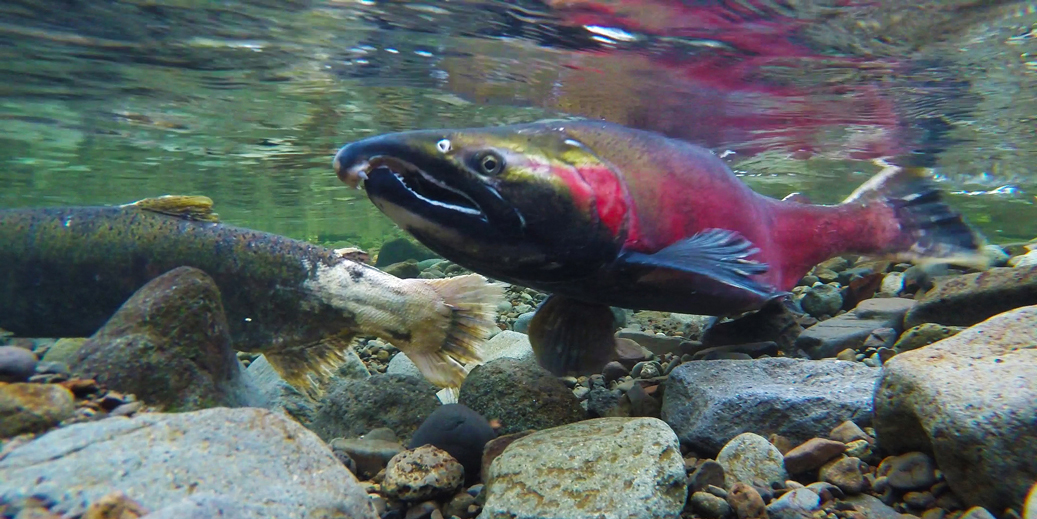
So, what did the project team find after four years of study? It turns out many salmon approach the hydro plant but do not pass through the fish ladder. This is troubling, as every salmon makes a difference when the population is small. On the other hand, the project also found that salmon passing through the fish ladder have high success making it to spawning sites, and that there are a few key habitats upstream that salmon tend to use. These habitats could be candidates for future habitat restoration work, monitoring and protection. Although it is unclear exactly why salmon are not passing the hydro plant, First Nations governments believe that positive changes can be made at the fish ladder to help salmon complete their migration. Now, they are advocating for changes to be made at the fish ladder to improve migration conditions moving forward.
“It’s clear there is much to do before salmon are returned to their once iconic abundance,” said Nicolas Lapointe, one of the biologists working on this project, “but we are confident in the strong Indigenous leadership that will be at the forefront of salmon recovery efforts and decision-making processes in the upper Yukon River.”

